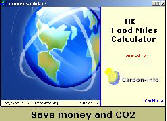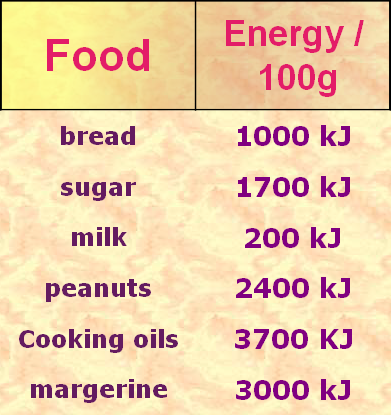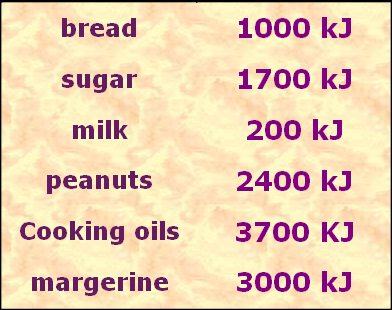















7th February 2007





The study of nutrition is really the study of what food contains - related to what we need to be healthy. Obviously at different stages of our lives and according to the activities in which we are engaged these requirements change. Imagine for a moment you are a baby – maybe you are a very advanced baby checking out the website – as a baby you need to grow, and to grow you would need to make bone material and new muscle; perhaps you are an athlete and need to build new muscle, either way you need food – but what sort?
Food is fuel – It is a store of chemical energy and we need energy to move, heat ourselves (with body heat) and to develop. If we intend to climb a mountain with need more energy than we would to simply feed the ducks in the park. What sort of food do we need for energy?


Energy values are measured in kJ ( kilojoules) and are usually printed on the side of food packs telling you how much energy is provide by 100 grams of the food. Example values are shown here:

Working out your own energy values for a given product would be best done on a spread-sheet programme like EXCEL. Formulae could be entered that take the value (as shown here ) from one column and divide it by the




Why do you think you need less food in Summer or in hot countries ?
Energy can be measured in different units: Calories are often seen in recipes. ( 1 Calorie is equivalent to 4184 kJ – or 1000 calories (note the capital and small letters) 1kJ = 1000 joules
Use the net to find out typical values for an everyday range of food such as potatoes, rice, bread, chocolate, meat, eggs, cheese, biscuits, beans, bananas… and any more you can think of. Try to collect a range of labels too from products that you have at home.
Convince yourself that you know several examples of good energy foods. Foods high in fat are also high in energy but carbohydrates can also be a good source even though they aren’t such high energy foods. However a healthy diet should not include too much fatty food – the body lays down surplus fat in various places if it isn’t used...




